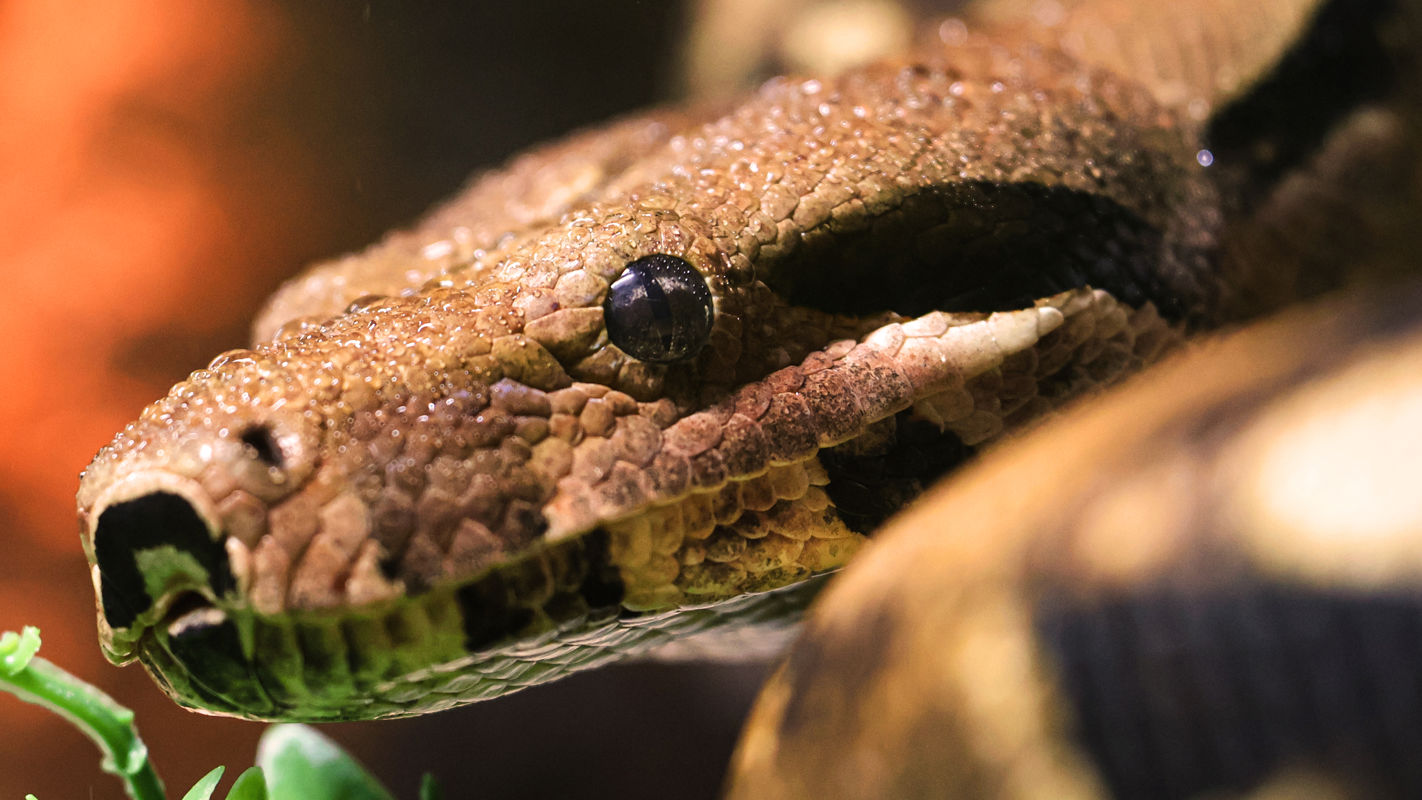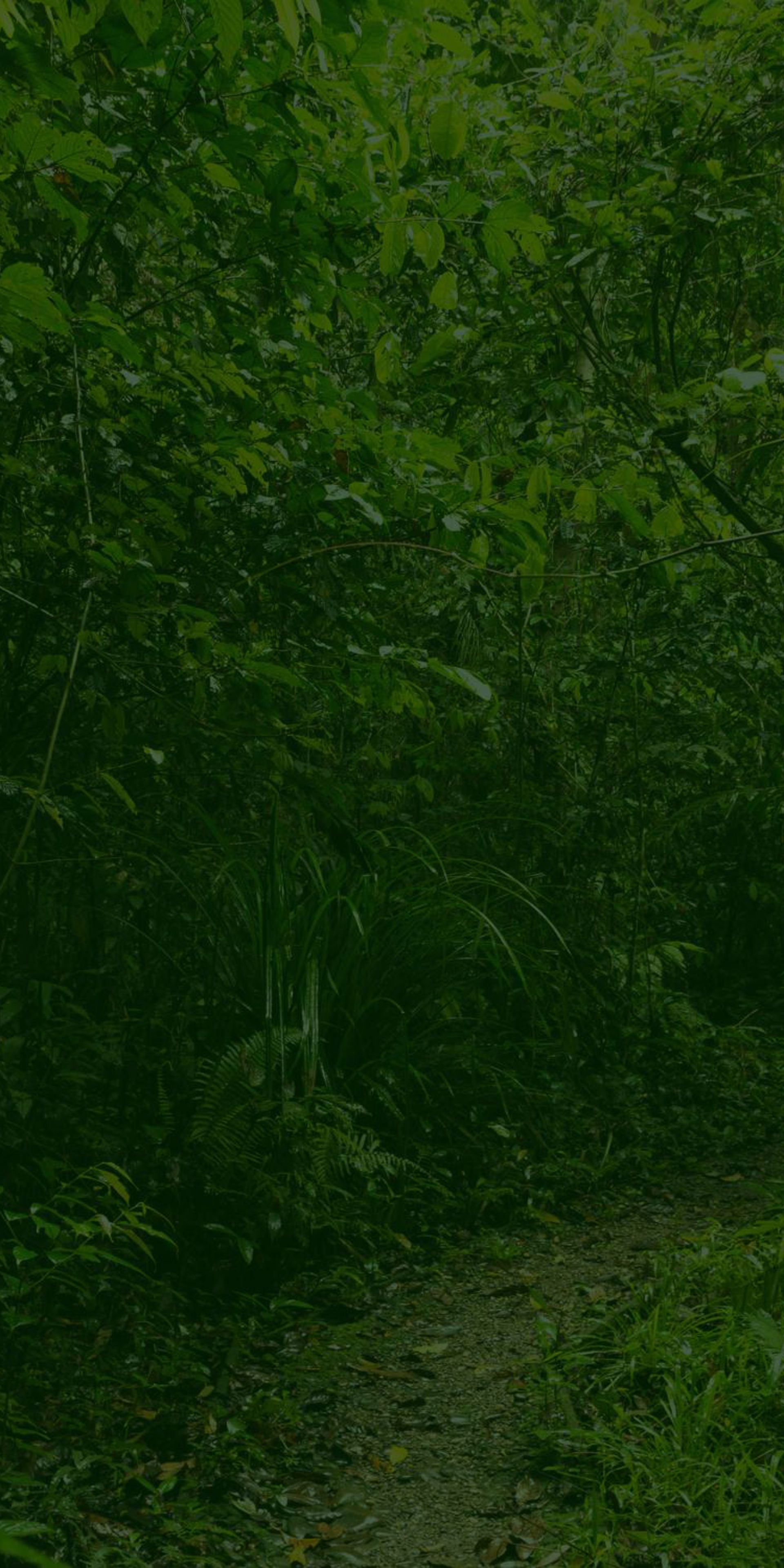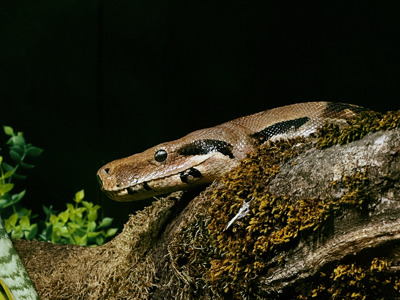
Boa constrictor
Key Facts:
Scientific name: Boa constrictor
Range: Central and South America, between Mexico and northern Argentina
Habitat: Varied – includes tropical and subtropical, wet and dry forest, beaches, savannahs and mangrove swamps
Diet: Carnivorous (lizards, small birds, small rodents and bats)2
Average size: 20 inches (Newborns/Neonates); 13 feet (Adults) 10
Life span: 20-30 years in the wild 10
IUCN Red List: Least concern
Boa constrictors are a type of non-venomous snake otherwise known as the red-tailed boa because of the distinctive maroon blotches they possess on their tails. Boa constrictors can be found in Central and South America and although they’re considered to be of ‘Least Concern’ according to the IUCN, they still face a variety of threats such as mining, hunting and agricultural production.
As they are a largely solitary species, we house one boa constrictor here at Twycross Zoo to closely mimic their wild behaviours.
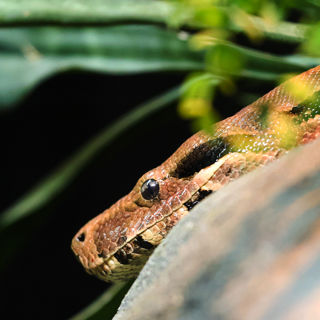
Boa constrictor colours vary between individuals living in different locations (i.e. boas on islands can present different physical features to their mainland counterparts). Presenting a mix of colours like greens, tans, reds and yellows, and a variety of patterns including bars, jagged patterns, circles and diamonds may help the species to camouflage within their unique environments.
Boa constrictors belong to one of only two groups of snakes to possess pelvic spurs (small, pointy ridges that sit either side of the cloaca - the opening that sits beneath the tail). These spurs are where their ancestors’ hind legs were positioned, demonstrating the evolutionary history of this species, having evolved from lizards. Although females are generally larger than males in this species, males possess the larger pelvic spurs that aid with mating.
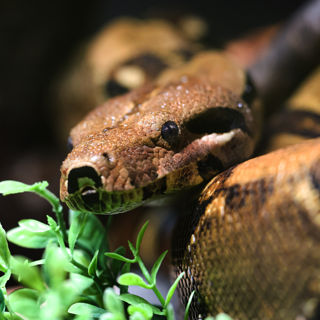
Did you know?
Boa constrictors are named because they use the method of constriction (tightening or squeezing) to cut off their prey's blood circulation before consuming them whole.
They are habitat generalists, meaning they can live in a wide variety of habitats like tropical forests, beaches, mangroves, savannahs and swamps.
Like other species of snake, they rely on their tongue to collect scent-based information about their surroundings, like the location of prey and the age of any nearby boa constrictors. When a snake draws its tongue back into the mouth, these scent particles are transferred from their tongue to the Jacobson's organ located on the roof of their mouth where this information is then interpreted
Boa constrictors are classed as a 'Least Concern’ species according to the IUCN Red List, meaning they are currently at low risk of extinction. However, they still face a variety of threats in the wild such as:
Habitat loss: Boa constrictors are affected by habitat loss as a result of the mining and oil industry. In addition, their habitats are also shaped and changed by farming – these areas are deforested to create space for growing food
Hunting: As snakes that can grow up to 13ft long, this species is hunted for its meat and skin to be used as a material for making products such as clothing and accessories
-
![Conservation Strategy Goal Three Image - Education Ranger at Twycross Zoo]()
What we're doing...
Our dedicated Conservation Education team are on hand to discuss the threats that boa constrictors face, and the challenges that habitat loss and hunting can cause more broadly.
-
![Boa 4]()
How you can help?
When buying animals to care for, ensure you’re not supporting the purchase of illegally sourced animals by thoroughly researching the species before you buy them. Animals should only be acquired from a reputable seller who can demonstrate the correct documentation to their buyers. This will help to conserve Boa constrictors and ensure stable in-situ (wild) population numbers.


